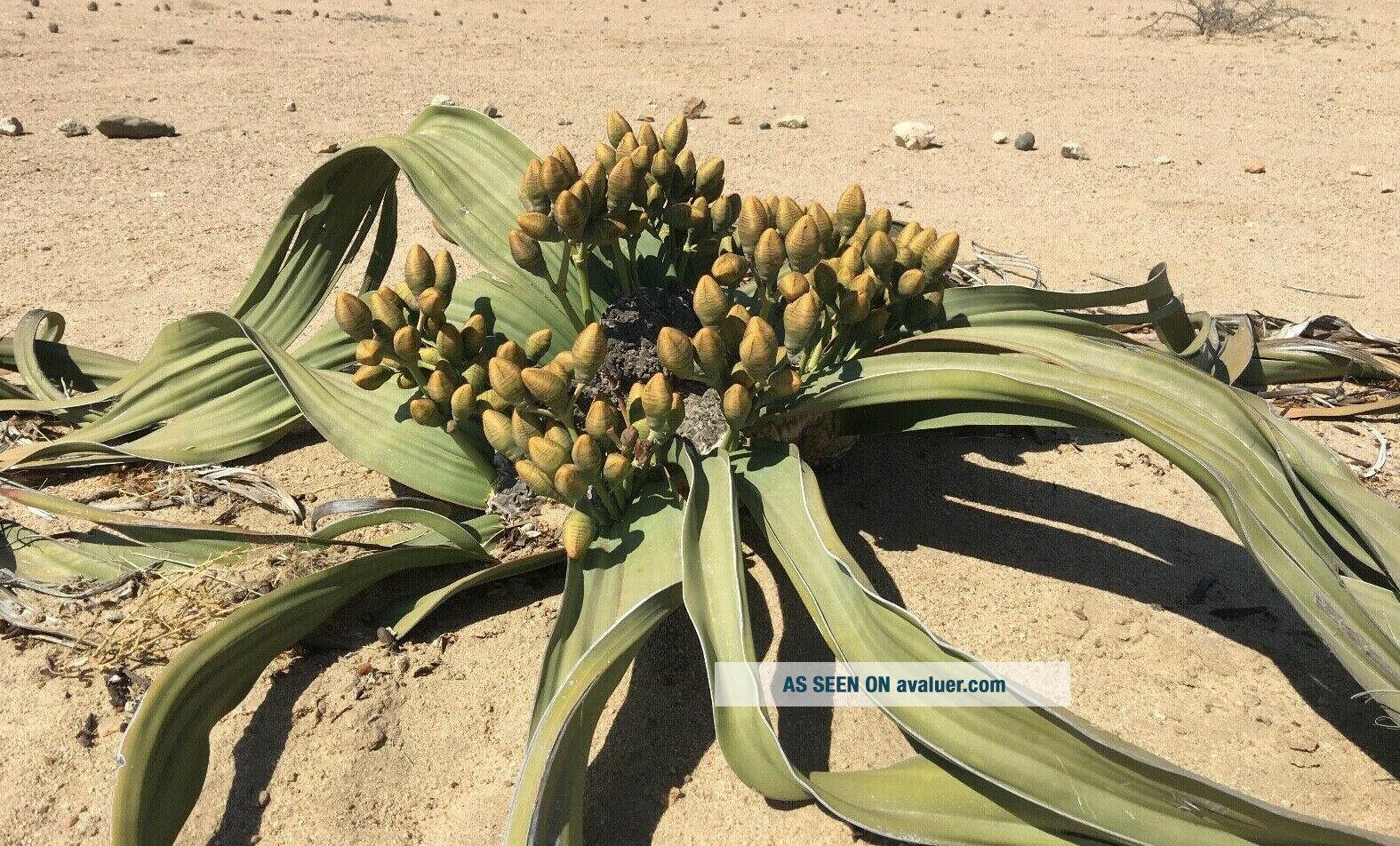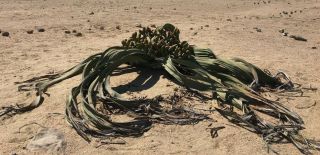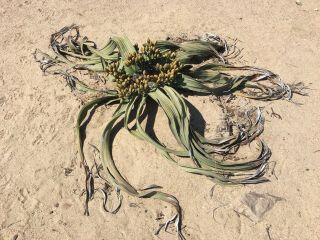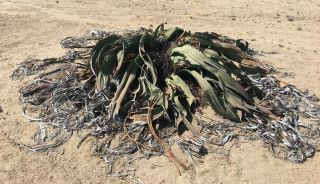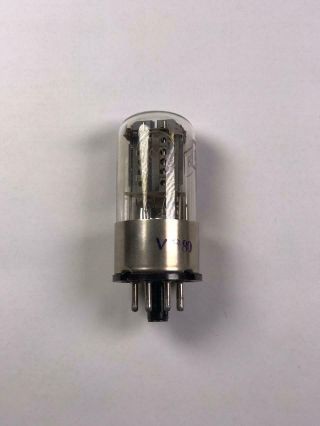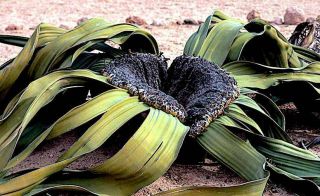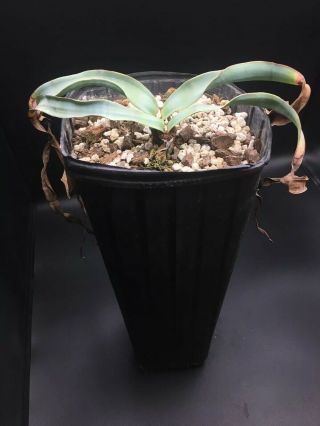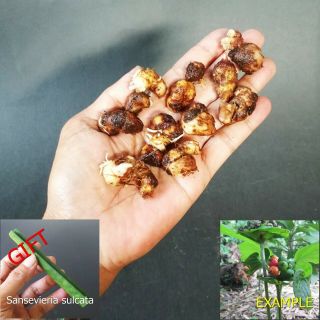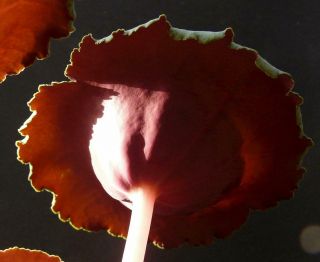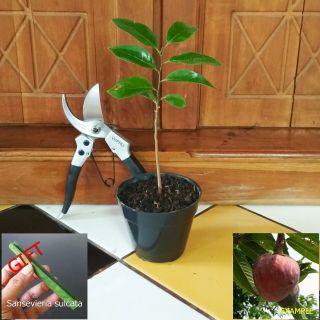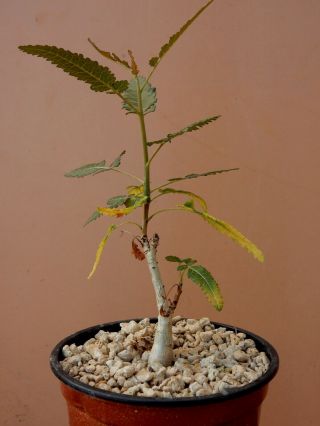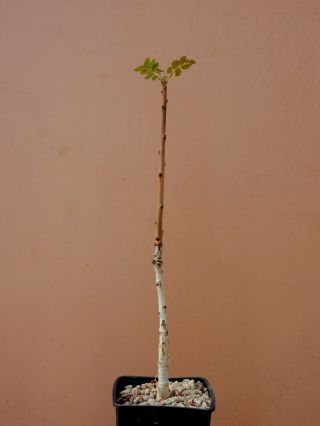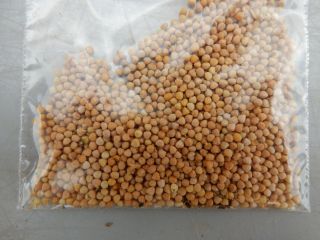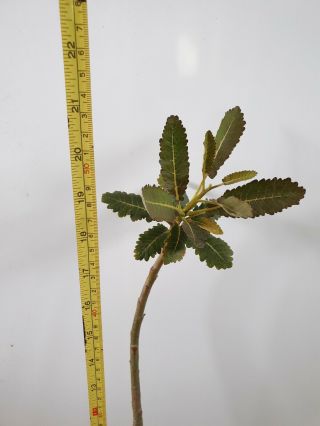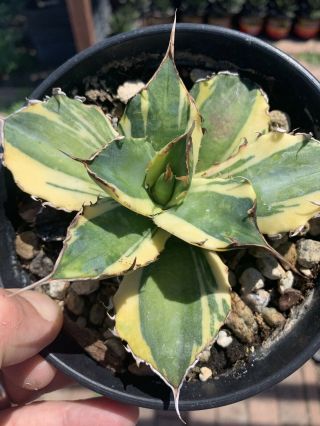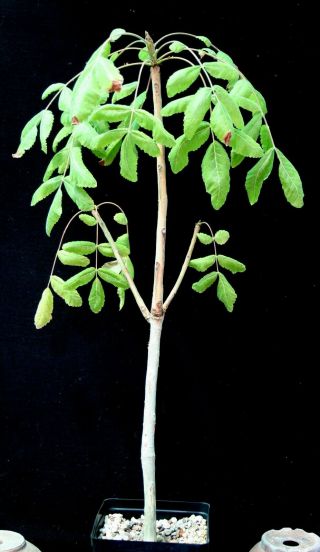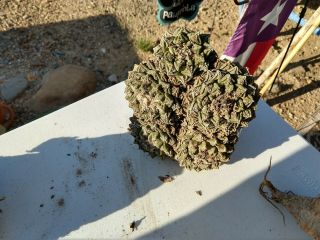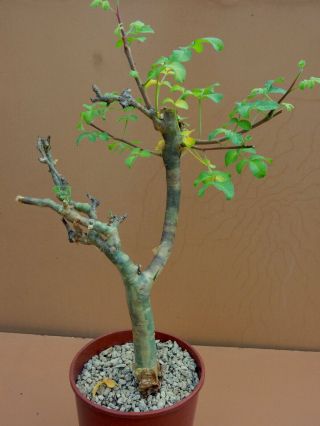Welwitschia Mirabilis - 1 X Extremely Rare Seed, Only Seller. Endemic To Namibia
Item History & Price
Welwitschia MirabilisSome of the rarest seeds available, easy to Germinate
Welwitschia is a monotypic gymnosperm genus, comprising solely the distinctive Welwitschia mirabilis. The plant is commonly known simply as welwitschia in English, but the name tree tumbo is also used. It is called kharos or khurub in Nama, tweeblaarkanniedood in Afrikaans, nyanka in Damara, and onyanga&n...bsp;in Herero. Welwitschia is the only living genus of the family Welwitschiaceae and order Welwitschiales, in the division Gnetophyta. Informal sources commonly refer to the plant as a "living fossil".[2][3] Welwitschia mirabilis is endemic to the Namib desert within Namibia and Angola.
After germination, the seedling produces two cotyledons which grow to 25–35 mm (0.98–1.38 in) in length, and have reticulate venation.[9]Subsequently, two foliage leaves are produced at the edge of a woody bilobed crown. The permanent leaves are opposite (at right angles to the cotyledons), amphistomatic (producing stomata on both sides of the leaf), parallel-veined and ribbon-shaped. Shortly after the appearance of the foliage leaves, the apical meristem dies and meristematic activity is transferred to the periphery of the crown.[10]The two foliage leaves grow continuously from a basal meristem reaching lengths up to 4 m (13 ft). The tips of the leaves split and fray into several well-separated strap-shaped sections by the distortions of the woody portions surrounding the apical slit, and also by wind and adventitious external injuries.[10][11] The largest specimens may be no more than 1.5 m (4.9 ft) tall above ground, but the circumference of the leaves in contact with the sand may exceed 8 m (26 ft).[12]Welwitschia has an elongated shallow root system consisting of "a tapering taproot with one or more non-tapering extensions, some pronounced lateral roots, and a network of delicate spongy roots"[12] and a woody fibrous unbranched main stem.[10] The roots extend to a depth roughly equal to the span of the living leaves from tip to tip.[10] The main stem consists of an unbranched woody crown roughly shaped like an inverted cone.[citation needed] The only branching in the shoot system occurs in the reproductive branches, which bear strobili.The species is dioecious, with separate male and female plants. Fertilization is carried out by insects including flies and true bugs. The commonest of the true bugs attending Welwitschia is a member of the family Pyrrhocoridae, Probergrothius angolensis, but a hypothesized role in pollination has so far not been demonstrated. Infrequently, wasps and bees also play a role as pollinators of Welwitschia. At least some of the pollinators are attracted by "nectar" produced on both male and female strobili.[13]Welwitschia has been classified as a CAM plant (crassulacean acid metabolism) after reconciliation of some initially contradictory and confusing data.[14][15] There are however some very puzzling aspects to the matter; for example, the employment of the CAM metabolism is very slight, which was part of the reason that it took so long to establish its presence at all; it is not understood why this should be.The age of individual plants is difficult to assess, but many plants may be over 1000 years old. Some individuals may be more than 2000 years old.[10] Because Welwitschia only produces a single pair of foliage leaves, the plant was thought by some to be neotenic, consisting essentially of a "giant seedling." However, research showed that its anatomy is not consistent with the giant seedling idea. Instead, the plant is more accurately thought of as achieving its unusual morphology as a result of having "lost its head" (apical meristem) at an early stage.[16]
Buyer is responsible for any customs and import regulations.Purchaser takes responsibilities for the item entering their country.Please ensure that you select correct shipping option:Economy International - no tracking information availableInternational Tracked Postage - tracking number availableNo phytosanitary available



